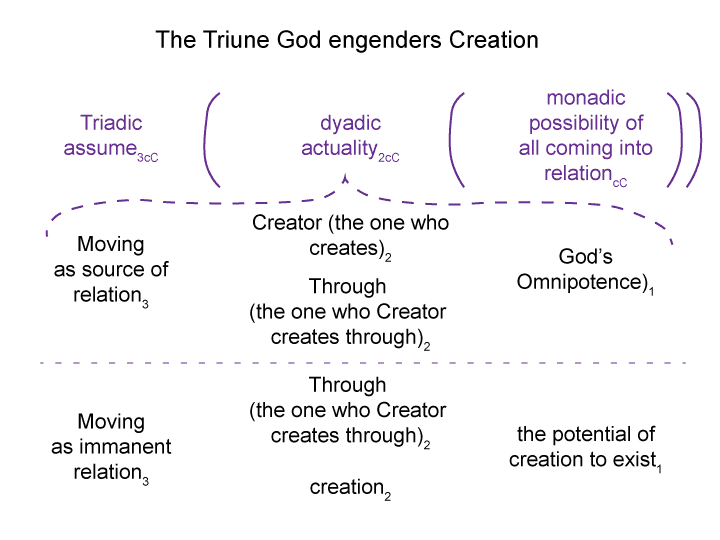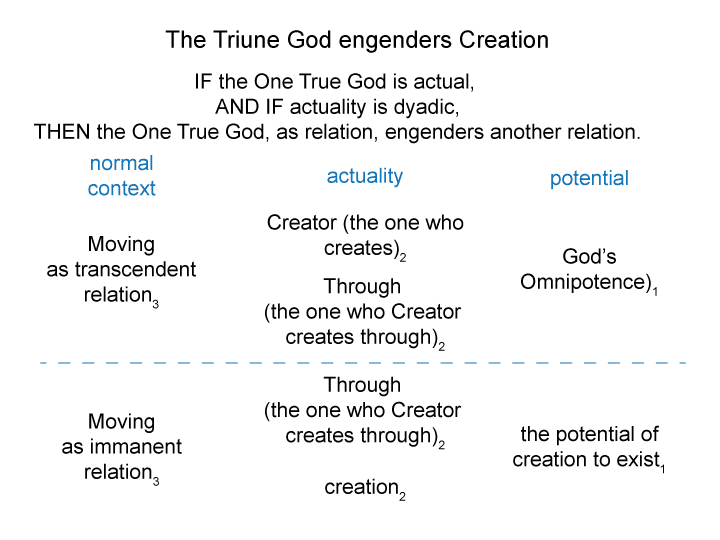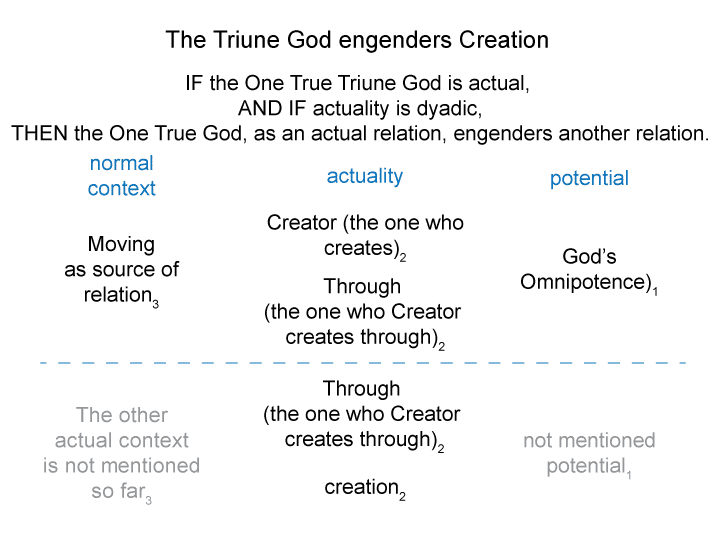Man and Sin by Piet Schoonenberg (1964) 2.1CC
Summary of text [comment] page 67
[What does “the One Who Recognizes” see in “The One Who Is Recognized”?
Christians view this Object as one of the designs of the Holy Spirit, that is, Love.
But that view is not exhaustive. Christians also view the Object as Speak. Here, actuality is depicted as “The One Who Speaks” and “The One Who Is Spoken, that is, the Word”.
Christians also view the Object as Life. Here, the actuality is depicted as The Father and The Son.
There are many ways to depict the designs of the Holy Spirit, but there is only one of each of them. Each one excludes all competing alternatives. There is only one recognition. There is only one love. There is only one word. There is only one life.]




